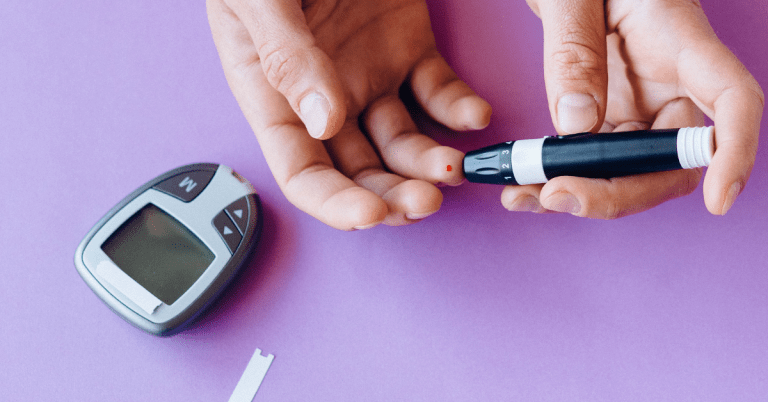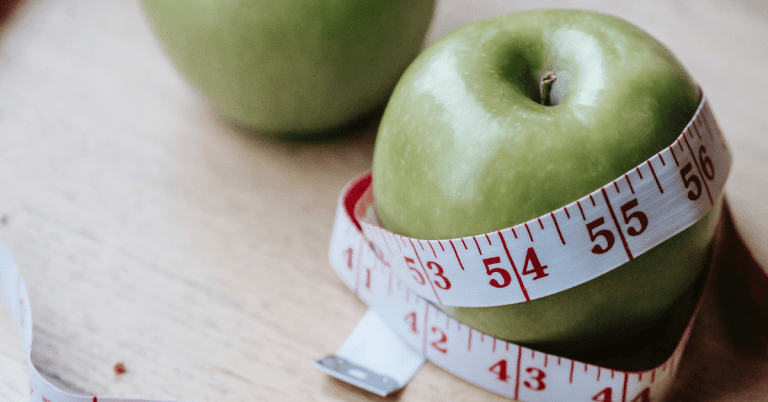Break the term up into “pre-” and “diabetes”: It means exactly what it sounds like – “a condition before diabetes.” Prediabetes, also referred to as borderline type 2 diabetes, is a health condition that one develops when their blood glucose levels are higher than the typical range but lower than that considered to be diagnostic.
A fasting glucose level between 6.1 mmol/L and 6.9 mmol/L and an A1C level between 6.0% to 6.4% indicates prediabetes. Being diagnosed with prediabetes increases the likelihood that you will develop type 2 diabetes in the future. Type 2 diabetes is a condition where your pancreas produces insulin, but the effectiveness of that insulin in helping transport glucose to body cells gradually decreases. Thus, think of prediabetes as a warning sign that conveys that the body cells are becoming increasingly resistant to insulin. Continue reading to learn about the details of prediabetes, as well as some tips and tricks you can implement to reverse this condition.
What Are the Symptoms?
Many people go several years before getting diagnosed with diabetes. Why? Because prediabetes does not have obvious, distinct symptoms that make it easy to detect. Many adults may experience no symptoms at all, whereas others may experience symptoms that are very subtle for one to take notice of. Despite all this, some individuals do experience symptoms frequent enough to encourage them to visit their healthcare team, mainly due to having excess sugar in their bloodstream. These symptoms include, but are not limited to:
- Feeling the need to urinate frequently
- Excessive hunger
- Excessive thirst
- Rapid weight gain or loss
- Persistent feelings of a lack of energy and overall tiredness
Risk Factors
- Age: 45 years or older
- Bodyweight: Overweight or obese, waist larger than 40 inches and 35 inches for men and women respectively
- Family history: Have a parent or sibling with type 2 diabetes
- Activity Level: Live sedentary lifestyle (physically active less than three times a week)
- Diet: A diet high in processed foods, red meats, and sugar-sweetened beverages
- Past Experience: Have had gestational diabetes (diabetes during pregnancy) in the past
- Race/Ethnicity: Groups with a high risk include American Indians, African Americans, Hispanic/Latino Americans, Asian Americans, and Pacific Islanders
If any of these factors apply to you, that does not automatically mean you have or are going to develop prediabetes. Rather, by making appropriate lifestyle changes you can minimize your risk of developing this condition.
Complications of Prediabetes
- Cardiovascular problems
- Stroke
- High blood pressure
- High cholesterol
- Disruptions in kidney function including kidney failure
- Nerve damage
- Vision problems
- Amputations
- Negative effect on mental health and wellbeing
As you may have probably heard before, each of our bodies is different. Just because one is diagnosed with prediabetes does not give a 100% guarantee that they will develop all, or any, of these conditions. Nevertheless, prediabetes does increase our vulnerability to various other conditions and therefore, is something that needs to be taken care of.
Is it Possible to Reverse Prediabetes?
Fortunately, prediabetes is a reversible condition. That is, with appropriate lifestyle changes, it is possible to slow down prediabetes from progressing into type 2 diabetes. Nonetheless, there is no hard-and-fast rule that everyone can follow to reverse prediabetes because, at the end of the day, everyone’s bodies act and respond differently. Rather, there are general lifestyle tips that everyone can follow to not only help reverse prediabetes, but also to live an overall healthy lifestyle.
Let’s Take a Look at Some Tips and Guidelines
- Eat a clean diet: A diet that is largely based on whole foods and low, if any, consumption of processed foods and red meats.
- Choose your carbs wisely: Base your diet on complex carbohydrates rather than refined carbohydrates. Choose fruits, vegetables, legumes, whole grains, and low-fat dairy products.
- Stay hydrated: Water helps manage blood sugar levels and is a healthy, calorie-free alternative for sugar-sweetened beverages.
- Stop smoking: Although immediately stopping a habit may be quite difficult, decreasing the frequency of smoking over time is the best approach. Seek support from your healthcare team when necessary.
- Exercise daily: This not only benefits your mental health, but also increases insulin sensitivity by body cells. Start small and progress until you reach a minimum of 30 minutes of aerobic exercise five days a week.
- Lose Weight: By following the tips mentioned above, you may find losing weight to be much easier than you once thought. With weight loss comes increased insulin sensitivity which can help reverse prediabetes.
References
Dansinger, M. “Prediabetes (Borderline Diabetes).” WebMD, https://www.webmd.com/diabetes/what-is-prediabetes. Accessed 25 August 2021.
Oberg, E. “Prediabetes.” MedicineNet, https://www.medicinenet.com/prediabetes/article.htm. Accessed 25 August 2021.
“Prediabetes.” HealthLink BC, https://www.healthlinkbc.ca/health-topics/uz1410. Accessed 24 August 2021.
“Pre-Diabetes.” Harvard Health Publishing, https://www.health.harvard.edu/a_to_z/pre-diabetes-a-to-z. Accessed 24 August 2021.
“Should you worry about prediabetes?” Harvard Health Publishing, https://www.health.harvard.edu/diseases-and-conditions/should-you-worry-about-prediabetes. Accessed 24 August 2021.
















